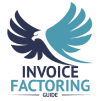
Nobody likes to think about what would happen if their company faces financial distress, but preparing for the road ahead and exploring all your options can help you avoid bankruptcy or come out of one stronger. Debtor-in-possession (DIP) financing and invoice factoring are common solutions that can help. We’ll explain how each works, and when they work best so you can make an informed decision.
DIP Financing Basics

Bankruptcy is sometimes the only way forward when a business can no longer pay its debts or fulfill its obligations. A Chapter 7 bankruptcy liquidates the business’s assets to pay off creditors, and the business is dissolved in the process. A Chapter 11 bankruptcy allows the business to remain open, though a reorganization is required.
The goal of a reorganization is to restore profitability. A business may shut down or sell divisions, cut budgets, lay off workers, and replace managers. Its debts don’t go away, but the creditors often work with the business to make repaying some or all of it more manageable. Well-known companies, such as Marvel Entertainment and General Motors, have come out on top after a bankruptcy, as Investopedia reports.
This presents a unique situation. All collection activities, judgments, foreclosures, and repossessions are suspended on any debt or claim that arose before the bankruptcy was filed. Creditors may still have liens or other security interests on property held by the business. They just can’t do anything about collecting on it.
The business is then referred to as a debtor in possession or DIP. It can continue to hold and use the assets even though the creditor has a legal claim to it but must get the court’s approval to use the assets for anything that falls outside normal business activities.
Purpose of DIP Financing
Businesses in this situation don’t typically have adequate working capital to cover their expenses during the reorganization. They’re also unlikely to have strong enough credit to qualify for most business funding solutions. DIP financing provides the cash and allows the business to continue functioning in an effort to help ensure creditors are paid, though DIP assets become the property of the lender.
DIP Financing Process
The first step in securing DIP financing is to find a lender. It’s best done in the early stages, right as the bankruptcy is filed, as approval can be a lengthy process.
The new lender can take a position that’s senior to any creditors with an existing lien or security interest, otherwise known as “priming.” The business must convince creditors to consent or convince the court that the creditor’s interests will remain protected. There is often a negotiation between the business and creditors and the business and DIP lender.
DIP lenders tend to develop detailed contracts that give them significant control to ensure their investment is protected. For instance, they may require that the business meet specific milestones to streamline the Chapter 11 process and set weekly budgets. There may be additional reporting needs, and a chief restructuring officer who’s approved by the DIP lender may be appointed. Because DIP lenders have significant leverage and can play a role in the outcome of a Chapter 11, existing lenders routinely become DIP lenders to protect their interests.
Whereas DIP loans have historically been managed more like a line of credit, it’s more common for them to be disbursed as term loans today.
Benefits of DIP Financing
Now that we’ve covered how DIP loans work, let’s take a quick look at the benefits.
- Working Capital: The cash businesses receive can be a lifeline that allows them to continue operating.
- Approval: DIP lenders are protected in unique ways, such as by being able to prime other lenders. This increases the odds of approval over other types of loans.
Drawbacks and Limitations of DIP Financing
While the importance of obtaining working capital at a difficult time cannot be overstated, the drawbacks and limitations should be considered before moving forward.
- Equity Rights: Many DIP lenders require equity as payment or partial payment for the loan.
- Decisionmaking Power: Even if equity is not requested, DIP lenders often require involvement in major decisions as a condition of the loan.
- Forced Sale: This amount of power, unfortunately, means DIP lenders can sometimes force a business to sell if it doesn’t meet certain guidelines or if it determines reorganization will be too costly or lengthy. This is common in the retail space, as Global Legal Group reports.
- Cost: DIP loans tend to have very high fees and interest. Some interest rates reach as high as 20 percent, per Global Legal Group, while fees alone can be seven percent, DePaul Business and Commercial Law Journal notes. With loans trending toward term loans and lump sum payments versus credit lines that allow businesses to manage costs better, keeping funding expenses low is an uphill battle.
Invoice Factoring Basics
Invoice factoring is not designed for businesses in distress. In fact, many healthy and thriving businesses leverage it. However, because of the unique way it works, it may help some businesses avoid bankruptcy or provide working capital during a reorganization.
Purpose of Invoice Factoring
Invoice factoring accelerates payment on B2B invoices, giving businesses an immediate cash flow injection whenever needed.
Invoice Factoring Process
With invoice factoring, you’re selling your unpaid B2B invoices at a discount to a third party known as a factor or factoring company. The factor provides you with most of the invoice’s value immediately. The cash usually arrives in your bank account within a couple of days, though some factoring companies offer accelerated options, including same-day payment. You’re free to spend the money however you wish and don’t need to chase the invoice. The factoring company will wait for payment and collect for you, then send you the remaining balance minus a small factoring fee that’s usually between one and five percent of the invoice’s value.
The best time to use factoring is before your business hits a point in which bankruptcy is imminent. It can help businesses avoid going into debt and make it easier to pay down debts. However, if the court and creditors agree, a factoring company may also be able to provide services during a reorganization, too.
Advantages of Invoice Factoring
- Debt-Free Funding: Factoring doesn’t create debt, so it can help you avoid bankruptcy or pay off debts.
- Approval: Most businesses qualify because approval isn’t contingent on your credit. Factoring companies are more concerned with the creditworthiness of your clients because they’re paying the invoices.
- Control: You don’t give up any equity or decision-making power.
- Cost: You’re in control of which invoices you factor so you can manage costs better.
Drawbacks and Limitations of Invoice Factoring
- Liens May Be an Issue: Invoice factoring involves selling your invoices, which is something you can’t do if someone else has a legal claim to them. Plus, your creditors will still have to agree to you obtaining funding this way.
- May Not Be Approved by Creditors: If you’re filing bankruptcy, your creditors and the court can approve or deny your funding request. Although it’s generally in their best interest to allow you to obtain funding that makes it possible for you to conduct business, some may prefer a traditional DIP lender that can exert control over your business.
DIP Financing vs. Invoice Factoring: A Comparative Analysis

Although there are many differences between DIP financing vs. factoring, six areas stand out.
- Timing: DIP is only used in Chapter 11, while factoring can be used anytime.
- Control: DIP lenders often have enormous power and sometimes require equity in your company, while factoring keeps control of your company with you.
- Type: DIP financing is usually paid out as a term loan in a lump sum, while factoring is flexible and pays out as you need it.
- Cost: Factoring can be the less expensive option because you have more control over your costs.
- Debt: DIP financing creates debt, while factoring is debt-free funding.
- Spending: DIP lenders often dictate how you can spend the cash they provide, but with factoring, it’s totally up to you.
Get a Complimentary Invoice Factoring Rate Quote
If invoice factoring seems like the ideal funding solution for your business needs, request a complimentary rate quote.

About Invoice Factoring Guide
Related Articles
Get an instant funding estimate
Results are estimates based on the calculated rate and the total invoice amount provided.
Actual rates may vary.
Request a Factoring Rate Quote
PREFER TO TALK? Call us at 1-844-887-0300










